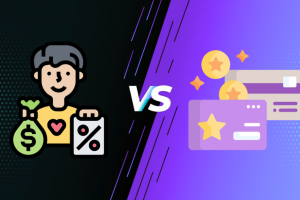Pricing models form the backbone of any outsourcing arrangement, shaping how businesses pay for services and managing their budgets effectively. In the outsourcing industry, companies delegate tasks like software development, customer support, or manufacturing to external providers to cut costs and focus on core operations.
But choosing the right pricing model can make or break the deal. It influences everything from project predictability to flexibility in handling changes. Over the years, these pricing models have evolved to suit different project types, from short-term gigs to long-term partnerships.
6 Key Pricing Models in Outsourcing Business
Let’s dive into the most common pricing models used in outsourcing. I’ll break them down with their pros, cons, and ideal use cases to help you decide which one fits your needs.
Fixed-Price Model
This is one of the simplest pricing models, where you agree on a set amount upfront for the entire project. The outsourcing provider delivers the work within a defined scope, timeline, and budget, no matter how much effort it takes on their end.
- Pros: Offers budget certainly, making it easier to plan finances. Reduces the risk of cost overruns for the client. Encourages efficiency from the provider since they absorb any extra costs.
- Cons: Limited flexibility for changes; any scope creep might require renegotiation or additional fees. It can lead to rushed work if the provider underestimates the effort.
- Best For: Well-defined projects with clear requirements, like building a basic website or a one-time marketing campaign.
In many cases, this model works well for small to medium enterprises looking for predictable pricing models without ongoing involvement.
Time and Material (T&M) Model
Here, you pay based on the actual time spent and resources used by the outsourcing team. It’s like billing by the hour, plus any materials or tools needed. Rates are typically set per hour, day, or week.
- Pros: High flexibility for evolving projects, as you can adjust scope without major contract changes. Transparent billing, since you see detailed reports on hours worked.
- Cons: Costs can escalate if the project drags on or inefficiencies creep in. Requires close monitoring to avoid surprises.
- Best For: Complex, iterative projects like software development with agile methodologies or research and development tasks where requirements might shift.
This pricing model is popular in IT outsourcing, where unpredictability is common, allowing businesses to scale efforts as needed.
Dedicated Team Model
Under this approach, you essentially “rent” a full team from the outsourcing provider for a fixed monthly or annual fee. The team works exclusively on your projects, acting like an extension of your in-house staff.
- Pros: Provides control and scalability, as you can direct the team’s priorities. Builds long-term expertise tailored to your business. Often more cost-effective than hiring full-time employees.
- Cons: Higher upfront commitment, with ongoing fees even during slower periods. Integration with your internal processes can take time.
- Best For: Ongoing operations, such as continuous IT support, content creation, or product maintenance.
Many global companies use this among pricing models to maintain a remote workforce without the hassles of recruitment.
Milestone-Based Model
This is a variation of the fixed-price model but broken into stages. Payments are released only after completing specific milestones, like delivering a prototype or finishing a phase.
- Pros: Aligns payments with progress, reducing risk for the client. Motivates the provider to meet deadlines. Easier to manage large projects by dividing them into manageable parts.
- Cons: Delays in one milestone can affect the whole timeline. Defining clear, measurable milestones upfront is crucial.
- Best For: Large-scale projects with distinct phases, such as app development or construction outsourcing.
It’s a balanced pricing model that combines predictability with performance incentives.
Value-Based Pricing
In this innovative model, fees are tied to the value or outcomes delivered, rather than time or effort. For example, payment might depend on achieving key performance indicators (KPIs) like increased sales or cost savings.
- Pros: Aligns incentives between client and provider, focusing on results. Can lead to higher quality work since success is shared.
- Cons: Harder to quantify value upfront, leading to potential disputes. Requires trust and clear metrics.
- Best For: Strategic initiatives, like digital transformation or consulting services where measurable impact matters.
As businesses seek more ROI-focused pricing models, this one is gaining traction in high-stakes outsourcing.
Hybrid Models
Sometimes, a single model doesn’t cut it, so providers blend elements from multiple pricing models. For instance, a fixed-price for core deliverables combined with T&M for add-ons.
- Pros: Customizable to fit unique project needs. Balances risk and flexibility.
- Cons: Can complicate contracts and tracking.
- Best For: Projects with both fixed and variable components, like a software launch with ongoing support.
Hybrid approaches are becoming common as outsourcing matures, allowing tailored pricing models for diverse business scenarios.
When selecting among these pricing models, consider factors like project complexity, duration, and your risk tolerance. For instance, startups might lean toward T&M for adaptability, while established firms prefer fixed-price for stability. Always review contracts carefully, including clauses for changes, and communicate openly with your provider.
In today’s competitive market, understanding these pricing models can give you an edge, ensuring you get the most value from outsourcing while controlling costs.
FAQs
What is the most cost-effective pricing model for outsourcing?
It depends on your project. Fixed-price is often cost-effective for straightforward tasks due to its predictability, but T&M might save money on flexible projects by avoiding overpayments for unused time.
How do I switch between pricing models mid-project?
Switching requires mutual agreement and contract amendments. Start with clear communication about why the change is needed, and document new terms to avoid disputes.
Are there hidden costs in outsourcing pricing models?
Yes, watch for extras like setup fees, currency fluctuations, or taxes. Always ask for a breakdown and include buffers in your budget.
Which pricing model is best for software development outsourcing?
Time and Material is popular for its flexibility in handling changes, but milestone-based works well for projects with defined stages.
How can I negotiate better terms in outsourcing pricing models?
Research market rates, define your requirements clearly, and build a relationship with the provider. Consider long-term contracts for discounts.


